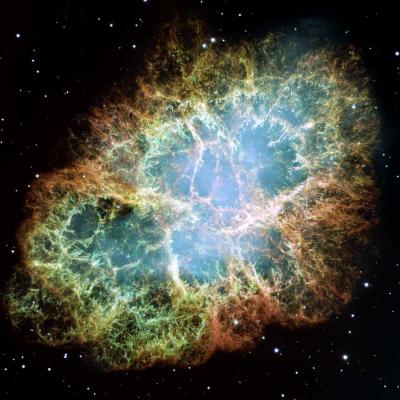

|
Astronomy 162:
Introduction to Stars, Galaxies, & the Universe
Prof. Richard Pogge, MTWThF 9:30
|

(Credit: Hubble Space Telescope)
Unit 3: "Death & Transfiguration":
The Endpoints of Stellar Evolution
We continue our exploration of Stellar Evolution that we began in Unit 2 by turning to the question of how stars die.
Massive stars end their lives in spectacular supernova explosions
wherein they briefly outshine entire galaxies full of billions of stars,
and the ashes of their final moments seed the interstellar medium with
heavy elements from which to build the next generation of stars. The
remnant core of such stars is left behind as either a neutron star, a
few of which are visible as rapidly spinning pulsars, or as a black hole
in which matter is crushed to such high densities that its gravity warps
space and time around it and nothing, not even light, may escape.
Smaller stars like our Sun will gently shrug off their envelopes over
the course of many thousands of years, leaving behind a white dwarf core
no larger than the Earth, but containing nearly 60% of the mass of the
Sun. With no sources of energy other than leftover heat from bygone
days, it will gently fade into the night.
Stellar Evolution plays out on time scales measured in millions and
billions of years, so how do we know we are right? The crucial test of
stellar evolution comes from observations of the H-R diagrams of star
clusters, putting our ideas on a firm observational basis.
Lectures
- Supernovae (Jan 30)
- Extreme Stars:
White Dwarfs & Neutron Stars (Jan 31)
- Black Holes (Feb 1)
- Testing Stellar Evolution (Feb 2)
- Quiz 2: Friday, February 3 (in class)
Associated Readings in Universe are listed
at the top of each of the lectures.
[
Return to Astronomy 162 Main Page
|
Go back to Unit 2
|
Go forward to Unit 4
]
Updated: 2006 January 29
Copyright © Richard W. Pogge, All Rights
Reserved.



